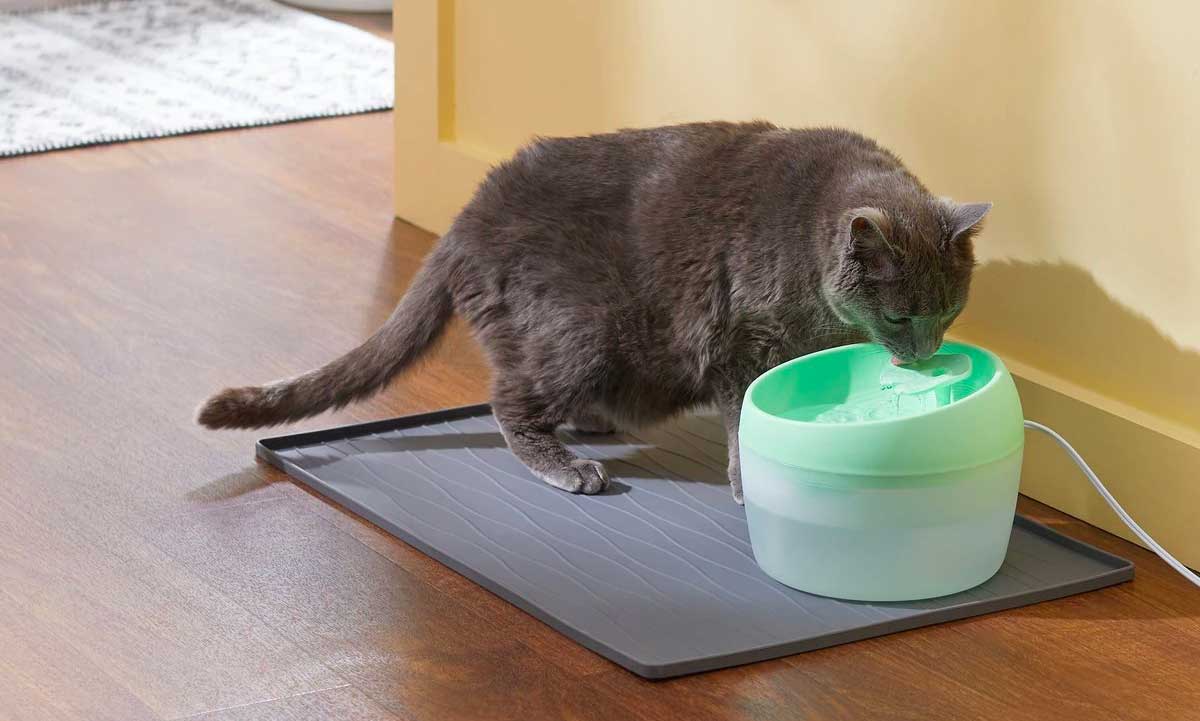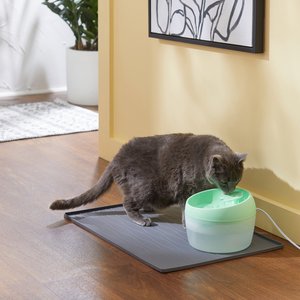When you feel hot, chances are your cat does, too. And just like us, our feline friends can be susceptible to overheating, heatstroke (hyperthermia) and dehydration, especially during hot weather and humid days.
To help protect your precious furball, we spoke to two vet experts to learn the common signs of overheating in cats, which behaviors to look out for and what to do if you think your cat is experiencing heatstroke.
Click to jump to each section:
What is Heat Exhaustion?
A cat's normal body temperature falls between about 100 degrees Fahrenheit to 102.5 degrees Fahrenheit. While a cat will typically try to cool off even at 103 degrees Fahrenheit—and 103 to 104 degrees Fahrenheit requires immediate attention—heatstroke occurs when a cat’s body temperature reaches over 105 degrees Fahrenheit, and the cat can no longer effectively cool itself off.
“Heatstroke in cats is no different than in other species,” says Dr. JoAnn Morrison, DVM, DACVIM, director of veterinary science for Banfield Pet Hospital in Vancouver, WA. “It is the inability for the body to cool itself appropriately, usually in the face of high environmental temperatures and/or humidity.”
Heatstroke is a medical emergency and requires immediate treatment by your veterinarian.
11 Symptoms of Overheating in Cats

These are the most common symptoms of heatstroke:
- Panting/trouble breathing
- Restlessness
- Rapid heartbeat/increased heart rate
- Drooling
- Lethargy/weakness
- Increased body temperature
- Stumbling/loss of balance
- Vocalizing
- Bright pink or red gums
- Red tongue
- Glazed eyes
“If your pet shows any of these signs, or you suspect your pet has heatstroke, make every effort to minimize their stress and keep them calm,” says Dr. Morrison. “Contact then transport your cat to a veterinarian or an emergency veterinary hospital immediately.”
Heat exhaustion is a medical emergency. If your cat isn’t cooled down promptly, it can lead to irreversible organ damage and/or loss of life.
How to Cool Down an Overheated Cat

- First, get the cat to a cool, calm and soothing environment, according to Dr. Lou Anne Wolfe, DVM, at Marina Animal Clinic in Tulsa, Oklahoma. This can include bringing your cat to a cool or air-conditioned room. This can help reduce your cat’s stress and start to get the situation under control.
- Rinse your cat in cool (not cold) water—only if water won’t further stress your cat. If water stresses out your cat, try rubbing them with a damp towel. "Do not place ice cubes on your cat or submerge your cat in water, as this can increase his stress level, putting him at even higher risk of medical complications," Dr. Morrison says.
- Make drinking water available. If your cat refuses to drink, use an eyedropper or syringe to drop a couple of beads of water in their mouth at a time. Do not shoot water into their mouth or down their throat, as it can cause choking.
- Take your cat to the vet. Try to continue cooling techniques while transporting them to the vet.
Causes of Overheating in Cats
Although most cats don’t pant as regularly as dogs, panting can be a sign that they’re overheating.
While high temperatures are the underlying cause of heatstroke, age, underlying medical conditions and breed can increase a cat’s risk of overheating.
Heat exhaustion in cats can also be a result of:
- Leaving the cat in a hot car
- Exercising too much in the heat
- Being stuck in direct sunlight with no access to a shaded area
- Lack of access to cold water
Cat Breeds Most at Risk for Overheating

“Some breeds—for example, Persians and Himalayans—may be predisposed to developing heatstroke or be especially sensitive to the effects of heat and humidity and unable to cool themselves effectively,” Dr. Morrison says.
These breeds include:
- Persians
- Himalayans
- British Shorthairs
- Scottish Folds
- Exotic Shorthairs
A physical examination by your veterinarian can help determine your cat’s particular body and facial makeup, if you’re not sure if your cat falls into these higher-risk categories.
Outdoor Cats Are Also at High Risk
While indoor cats can develop heatstroke, especially if they’re in a house without air conditioning in the summer months, outdoor cats generally have a particularly high risk because it’s harder for them to escape excessive heat.
Compared to indoor cats, outdoor cats may also have more limited access to cool water.
Whether or not your cat falls into the high-risk category, veterinary experts recommend keeping all cats out of the direct sun as much as possible.
As with humans in warm weather, cats need access to shade, cool areas and water to stay hydrated, especially on really hot days. Cats generally are protected best when they’re inside and in a cool area.
If your cat has signs of heatstroke, contact your veterinarian right away—this can be a life-threatening emergency. And if you’re a multi-pet household, you may want to learn the signs of heatstroke in dogs, too.
More on keeping cats cool and hydrated:
Share:












